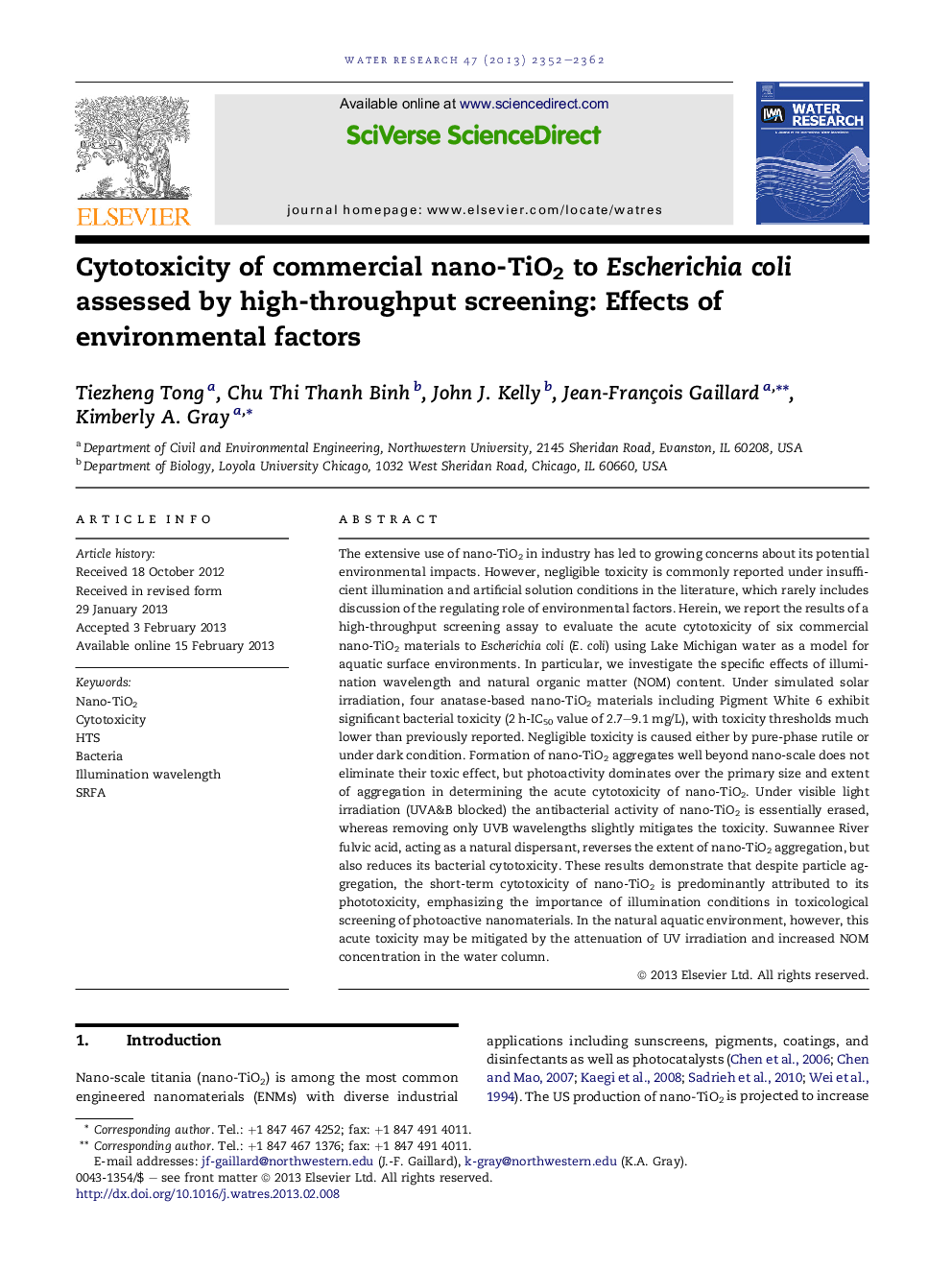| Article ID | Journal | Published Year | Pages | File Type |
|---|---|---|---|---|
| 4482287 | Water Research | 2013 | 11 Pages |
The extensive use of nano-TiO2 in industry has led to growing concerns about its potential environmental impacts. However, negligible toxicity is commonly reported under insufficient illumination and artificial solution conditions in the literature, which rarely includes discussion of the regulating role of environmental factors. Herein, we report the results of a high-throughput screening assay to evaluate the acute cytotoxicity of six commercial nano-TiO2 materials to Escherichia coli (E. coli) using Lake Michigan water as a model for aquatic surface environments. In particular, we investigate the specific effects of illumination wavelength and natural organic matter (NOM) content. Under simulated solar irradiation, four anatase-based nano-TiO2 materials including Pigment White 6 exhibit significant bacterial toxicity (2 h-IC50 value of 2.7–9.1 mg/L), with toxicity thresholds much lower than previously reported. Negligible toxicity is caused either by pure-phase rutile or under dark condition. Formation of nano-TiO2 aggregates well beyond nano-scale does not eliminate their toxic effect, but photoactivity dominates over the primary size and extent of aggregation in determining the acute cytotoxicity of nano-TiO2. Under visible light irradiation (UVA&B blocked) the antibacterial activity of nano-TiO2 is essentially erased, whereas removing only UVB wavelengths slightly mitigates the toxicity. Suwannee River fulvic acid, acting as a natural dispersant, reverses the extent of nano-TiO2 aggregation, but also reduces its bacterial cytotoxicity. These results demonstrate that despite particle aggregation, the short-term cytotoxicity of nano-TiO2 is predominantly attributed to its phototoxicity, emphasizing the importance of illumination conditions in toxicological screening of photoactive nanomaterials. In the natural aquatic environment, however, this acute toxicity may be mitigated by the attenuation of UV irradiation and increased NOM concentration in the water column.
Graphical abstractFigure optionsDownload full-size imageDownload high-quality image (167 K)Download as PowerPoint slideHighlights► We assess nano-TiO2 toxicity to Escherichia coli by a HTS assay in Lake Michigan water. ► Nano-TiO2 has marked phase- and photo-dependent toxicity regardless of aggregation. ► Photoactivity dominates over primary size & aggregation extent to control TiO2 toxicity. ► Nano-TiO2 toxicity may be mitigated by UV attenuation in natural water. ► SRFA reverses aggregation extent but also reduces the toxicity of nano-TiO2.
